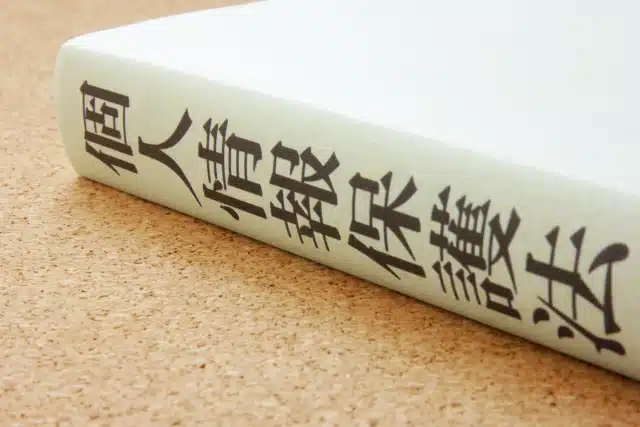What is the Investment Agreement Required When Investing in a Venture Startup? Explaining the Preferred Dividend Clause

In Japan, there has been a surge in the number of startups and venture companies. When starting a business, there are various methods available, from self-funding to raising funds from venture capitalists and investors. So, what exactly is an investment contract, which is agreed upon between the company and the investor when making an investment?
For investors, it is crucial to minimize the risks associated with the investment as much as possible. In this context, the ‘Preferred Dividend Clause’ in an investment contract is an important provision for risk reduction.
In this article, we will explain the ‘Preferred Dividend Clause’ in an investment contract in an easy-to-understand manner.
What is an Investment Contract?

An investment contract is typically concluded when investors such as venture capitalists invest in startups and venture companies. However, there is no specific regulation for it in the law.
Nevertheless, there are risks such as a drop in stock prices after investment or even bankruptcy in the case of unstable venture companies. Therefore, it is common for investors to conclude an investment contract to mitigate these risks as much as possible.
The main items stipulated in an investment contract regarding the content of the investment are as follows:
- Details about shares (type, number, price, payment conditions, etc.)
- Investment terms
- Investment withdrawal
- Exit (recovery of investment funds and profit acquisition through IPOs or M&As)
Shares can be broadly divided into “common shares” and “class shares”. The preferred dividend rights, which is the theme of this article, is also one type of class shares.
Preferred dividend rights are the rights to receive dividends before common shareholders or to receive higher dividends. However, issuing class shares with preferred dividend rights requires a general shareholders meeting and a resolution to amend the articles of incorporation, which takes a long time and involves complicated procedures.
Therefore, to set up preferred dividend rights more easily, it is common to stipulate a clause regarding preferred dividends (preferred dividend clause) in the investment contract without issuing class shares.
Purpose of the Preferred Dividend Clause in an Investment Contract
Startups and venture companies aiming for an IPO rarely distribute dividends to shareholders even if they make a profit, and it is common to use the profit as business funds.
Investors are not necessarily expecting dividends, and many of them invest with the aim of achieving a large return through exits such as IPOs. Considering these points, the necessity of a preferred dividend clause is not so significant.
So, what is the purpose of setting up a preferred dividend clause in an investment contract?
The purpose varies depending on the investor and the company receiving the investment. The main purpose for startups and venture companies is to balance fundraising and stable management by setting the following conditions in conjunction with preferred dividend rights:
- Restrictions on the transfer of shares
Prevents shares from being transferred to unwanted third parties without the company’s approval - Restrictions on voting rights
By limiting voting rights at the general shareholders meeting, it is possible to suppress shareholder involvement in management and enable autonomous management. - Higher selling price than common shares
The number of shares issued for the investment amount is reduced, which can suppress a decrease in the founder’s shareholding ratio.
On the other hand, the main purpose for investors is to reduce the investment risk in unstable startups and venture companies and to acquire as much distribution money as possible at the time of exits such as IPOs and M&As.
In particular, for venture capitalists who run investment businesses with funds collected from financial institutions and business companies, it is essential to obtain as favorable conditions as possible in the investment contract.
If you want to know more about the stock purchase clause in an investment contract, please see the following article in addition to this one.
https://monolith.law/corporate/investment-stock-purchase-clause[ja]
Types of Preferred Dividend Rights in Investment Contracts

There is no fixed format for defining preferred dividend rights, but they can be broadly classified into four types.
What are Participating and Non-Participating?
Whether or not a shareholder with preferred dividend rights can receive ordinary dividends after the payment of preferred dividends distinguishes between participating and non-participating.
Participating
After paying the specified preferred dividends to shareholders with preferred dividend rights (preferred shareholders), if there are remaining distributable profits, these shareholders can receive dividends again along with common shareholders. This is often chosen by investors as it offers many benefits.
Non-Participating
Even if there are remaining distributable profits after paying the specified preferred dividends to preferred shareholders, these shareholders do not receive dividends.
What are Cumulative and Non-Cumulative?
Whether or not the shortfall can be carried forward if the full amount of preferred dividends is not paid to preferred shareholders distinguishes between cumulative and non-cumulative.
Cumulative
If the dividends paid to preferred shareholders in a specific fiscal year do not meet the specified amount, the shortfall is added to the dividends of the following year and accumulated. This can be a burden for startups and venture companies that do not distribute dividends, but it has benefits for investors.
Non-Cumulative
If the dividends paid to preferred shareholders in a specific fiscal year do not meet the specified amount, the shortfall is not carried forward to the following year.
Combination of “Preferred Distribution Right of Residual Assets” and “Deemed Liquidation Clause”
Similar to preferred dividend rights, there is a “preferred distribution right of residual assets”. This is often set in investment contracts in the United States and other countries. Here is a simple explanation to avoid confusion with preferred distribution rights.
The preferred distribution right of residual assets is the right of preferred shareholders to receive a certain amount of distribution preferentially over common shareholders when distributing residual assets at the time of company liquidation.
However, if the invested company is transferred by M&A instead of liquidation, the amount paid to preferred shareholders becomes an amount according to the number of shares held, regardless of the type of shares. This can result in a loss for investors who purchased preferred shares at a high price.
Therefore, by setting a “deemed liquidation clause” in the shareholders’ agreement that deems the company as liquidated when it is transferred, the “preferred distribution right of residual assets” applies to preferred shareholders, and the transfer amount is considered as residual assets and distributed. This allows them to receive a larger amount.
If you want to know more about the deemed liquidation clause in investment contracts, please see the following article along with this one.
https://monolith.law/corporate/investment-contract-liquidation-provision[ja]
Examples of Preferred Dividend Clauses in Investment Contracts
We will introduce the text of the equity investment contract published by the Small and Medium Enterprise Agency, focusing on the specific preferred dividend clause.
Article 5.7 (Preferred Dividends)
1. The issuing company shall, after three years from the payment date, distribute preferred dividends related to Class A preferred shares to investors once every fiscal year, within the range of distributable amount, in accordance with laws and regulations and this share issuance prospectus.
2. The issuing company shall, after three years from the payment date, make efforts within a commercially reasonable range to secure a distributable amount so that it can distribute a dividend of 5% per year to investors in accordance with laws and regulations and this share issuance prospectus.
(Source: Small and Medium Enterprise Agency, Template for Investment Contract, Document 5: Equity Subscription Contract[ja])
The key points of this clause are as follows:
- Under the Japanese Companies Act, the issuing company is not obligated to distribute surplus dividends, but it obligates the issuing company to distribute preferred dividends to investors.
- Under the Japanese Companies Act, surplus dividends can only be implemented within the range of the distributable amount, but it imposes on the issuing company an obligation to make efforts to secure the distributable amount.
Note that if you want to reduce the burden on the issuing company, you can stipulate that preferred dividends will be implemented within a range that exceeds a certain distributable amount.
Also, if you want to obligate the issuing company to distribute preferred dividends instead of just making efforts, as stated in the second paragraph, you need to stipulate the distinction between participating/non-participating and cumulative/non-cumulative.
Example of Clause in Case of Non-Participation
No surplus dividends will be distributed to Class A preferred shareholders beyond the preferred dividends.
Example of Clause in Case of Non-Cumulative
If the preferred dividends for Class A preferred shareholders in a certain fiscal year do not reach 5% per year, the shortfall will not be accumulated in the following fiscal years.
Usually, this clause is set in conjunction with the aforementioned “Restrictions on Share Transfer of Preferred Shareholders” and “Restrictions on Voting Rights of Preferred Shareholders”.
Summary

In the sample clause, it only stipulates about Series A preferred shares. However, it’s not uncommon for startups and venture companies to issue new preferred shares as they often raise funds multiple times. In such cases, it’s necessary to determine the priority of preferred dividends in the preferred shareholders’ agreement.
When issuing preferred shares like this, various points must be considered when creating investment contracts or shareholder agreements. Therefore, rather than making judgments on your own, we recommend consulting with a lawyer who has extensive knowledge and experience in advance.
Introduction to Our Firm’s Measures
Monolith Law Office is a legal office with high expertise in both IT, particularly the Internet, and law. When investing in startups and venture companies, it is common to create investment contracts. Our firm handles the creation and review of contracts for various cases, from companies listed on the Tokyo Stock Exchange Prime Market to venture companies. If you have any concerns about contracts, please refer to the article below.
Category: General Corporate
Tag: General CorporateIPO





















